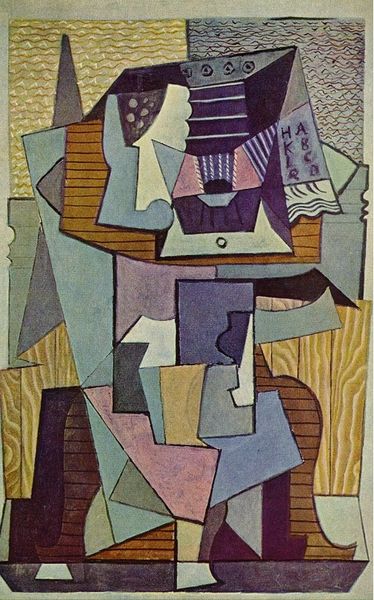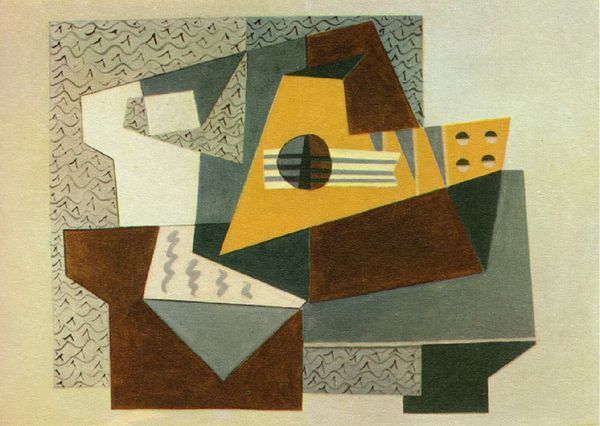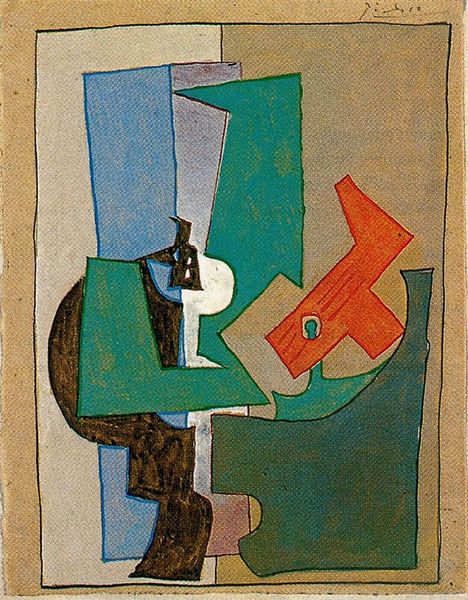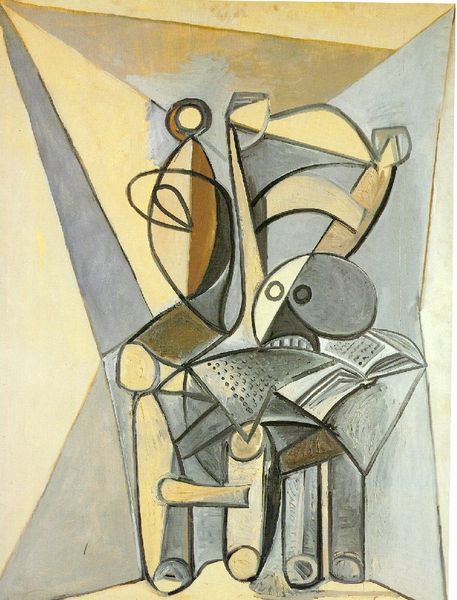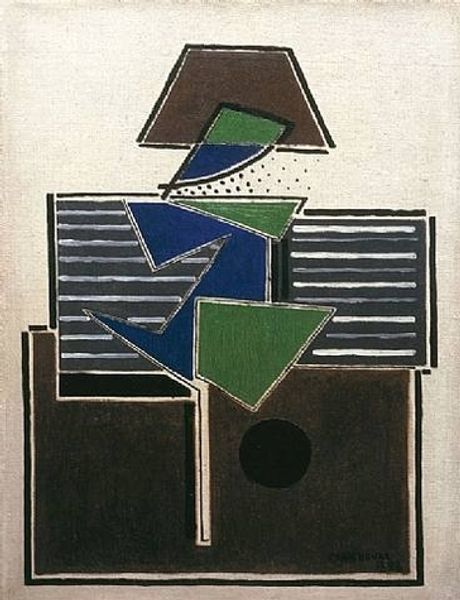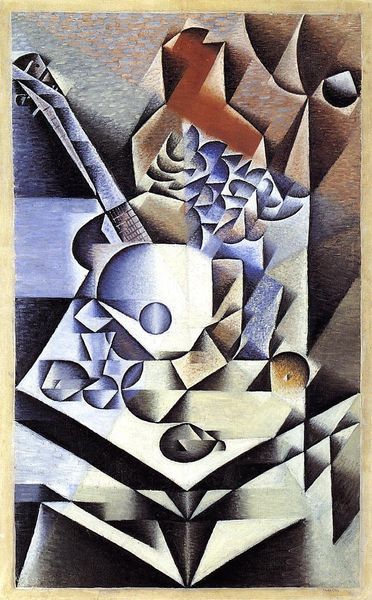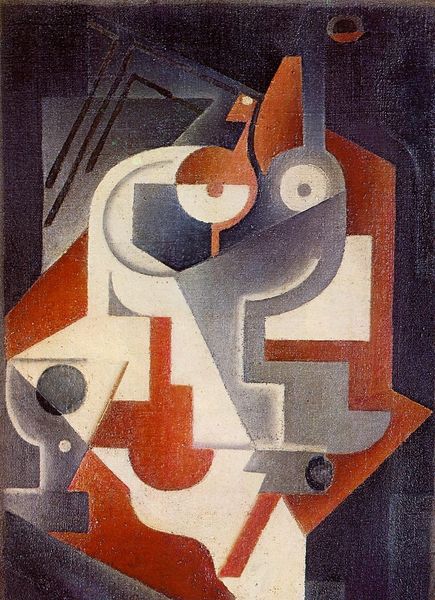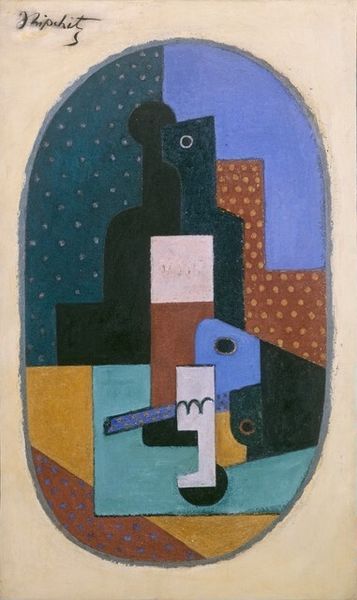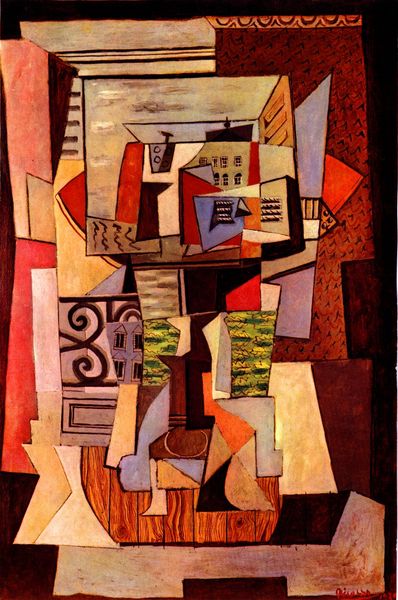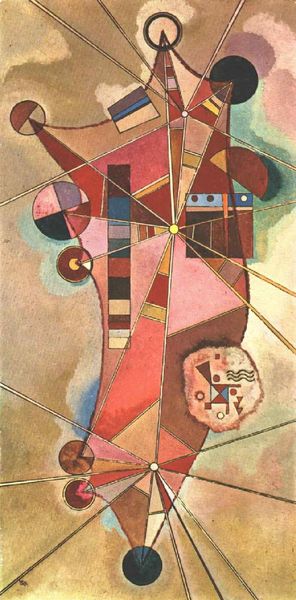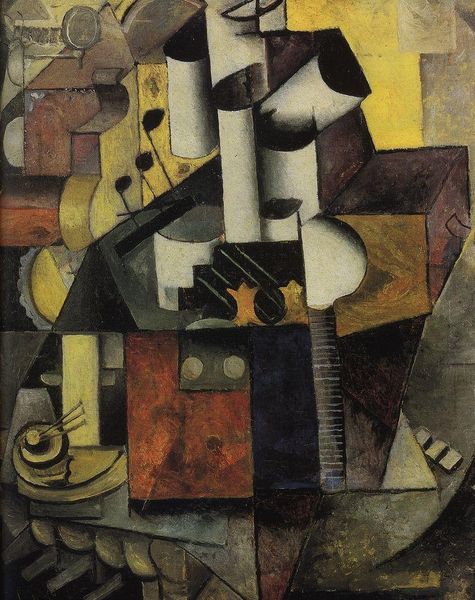
mixed-media, painting
#
portrait
#
cubism
#
mixed-media
#
painting
#
pop art
#
bird
#
geometric
#
abstraction
Dimensions: 62 x 47 cm
Copyright: Public domain US
Editor: Here we have Pablo Picasso’s "Wounded Bird" from 1921, made using mixed media. It's strikingly geometric, but the pastel shades give it a surprising softness. What's your interpretation of this piece? Curator: I see a potent visual metaphor for vulnerability within a fractured world. Consider 1921: the devastation of World War I was still raw. The bird, traditionally a symbol of freedom and peace, is here broken down into cubist shards. Is this a reflection of societal trauma, where innocence is wounded and fragmented by violence? Editor: So, you see it as speaking to the post-war climate? Curator: Precisely. And note Picasso's deliberate choice of form. Cubism itself challenges traditional perspectives. He presents the bird from multiple viewpoints simultaneously, mirroring the disorientation and loss of a generation. What does the “wound” signify? Is it literal, or does it embody something larger, perhaps a collective psychological scarring? Editor: It could be both, I guess. It definitely feels heavy, but the "pop art" elements also keep it approachable. I hadn’t thought about the connection between the style and the historical moment, though. Curator: Exactly, and isn't that juxtaposition – that approachability alongside profound pain – one of the great achievements of art? Think about who is allowed to feel wounded, what wounds are validated, and who is left silenced in its wake? What’s next? Editor: I never considered how this piece could speak about broader social narratives. Thank you. Curator: Of course! Remember that art often acts as a mirror, reflecting both personal and collective experiences and demanding that we question the world around us.
Comments
No comments
Be the first to comment and join the conversation on the ultimate creative platform.
